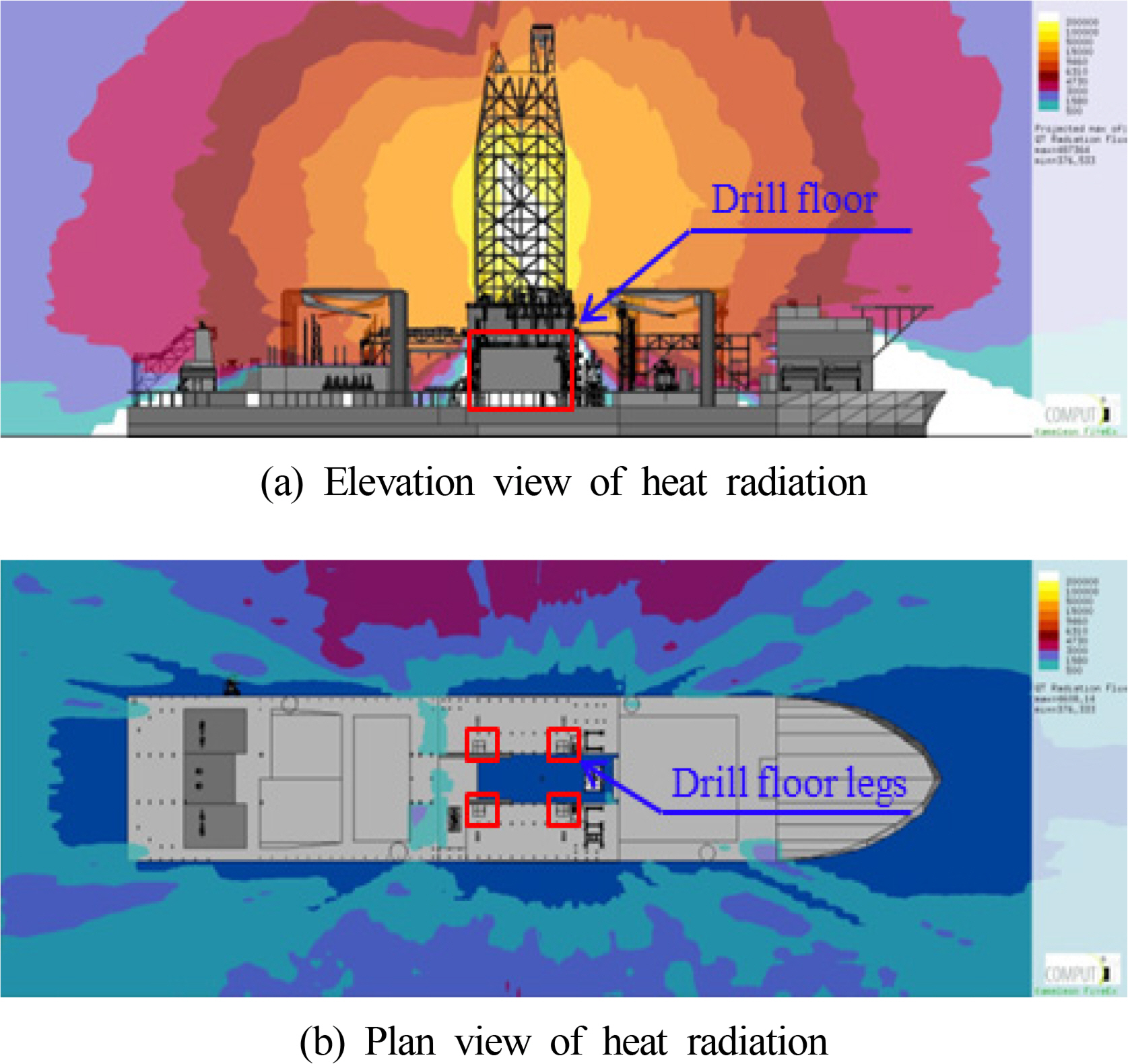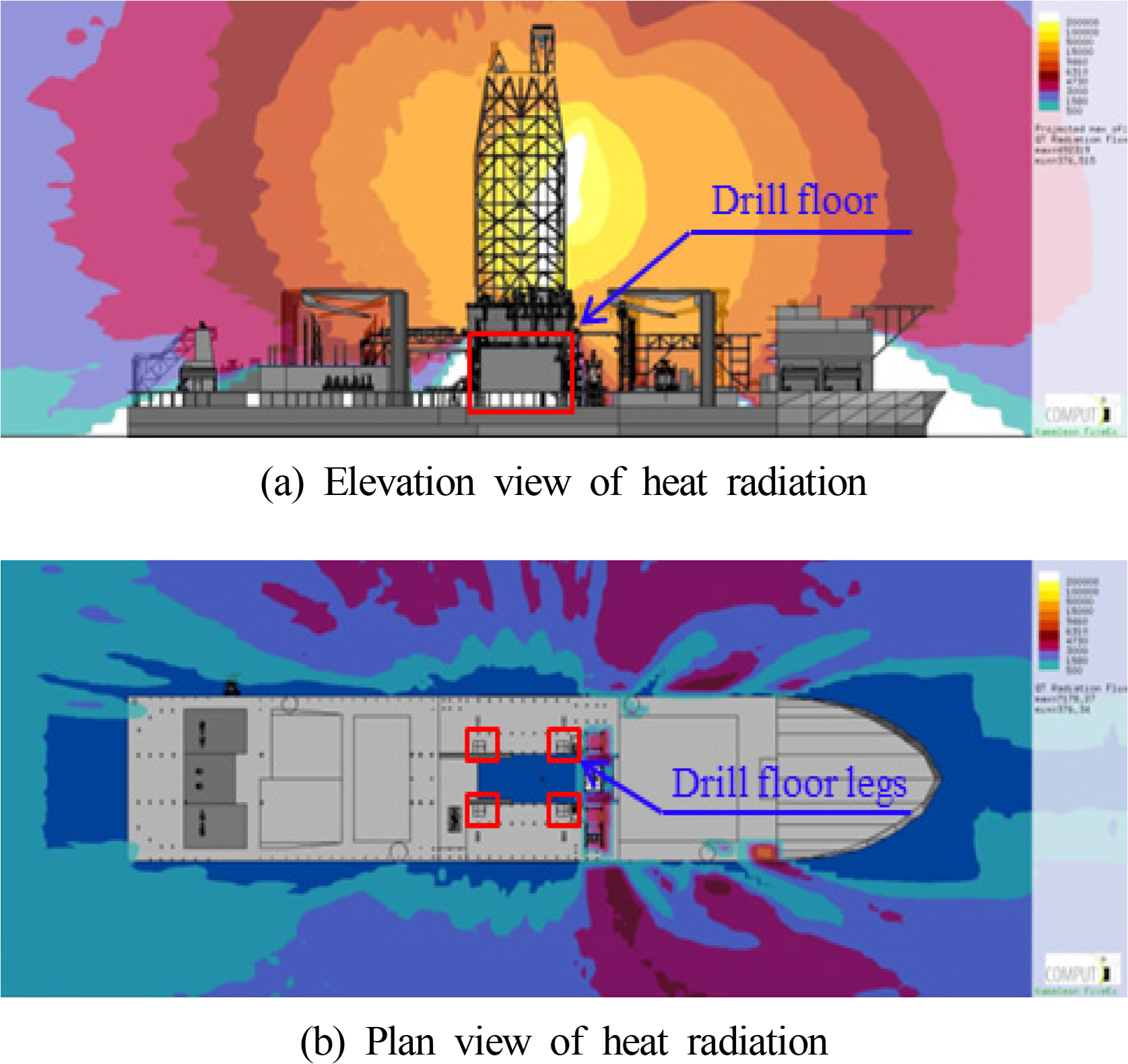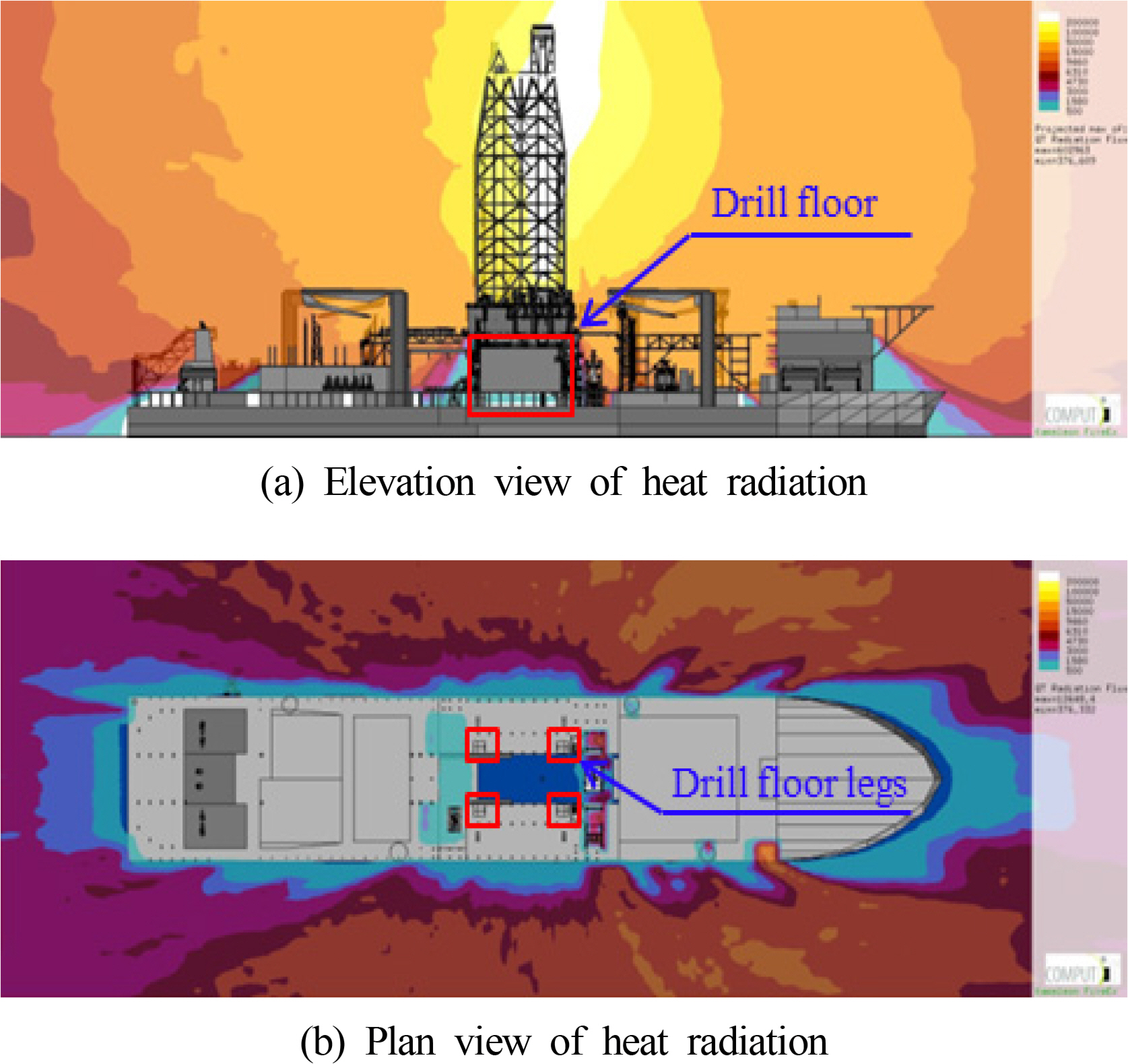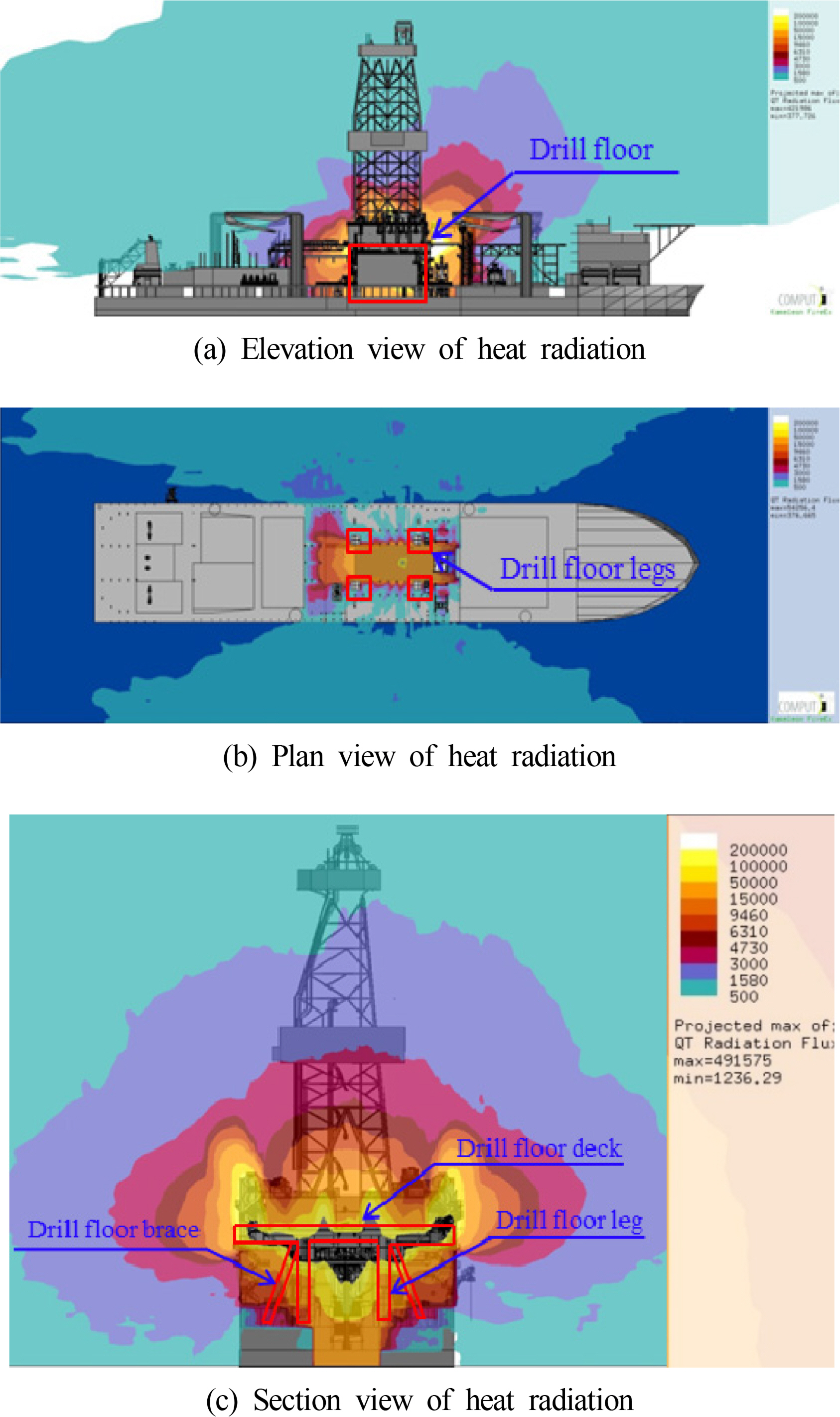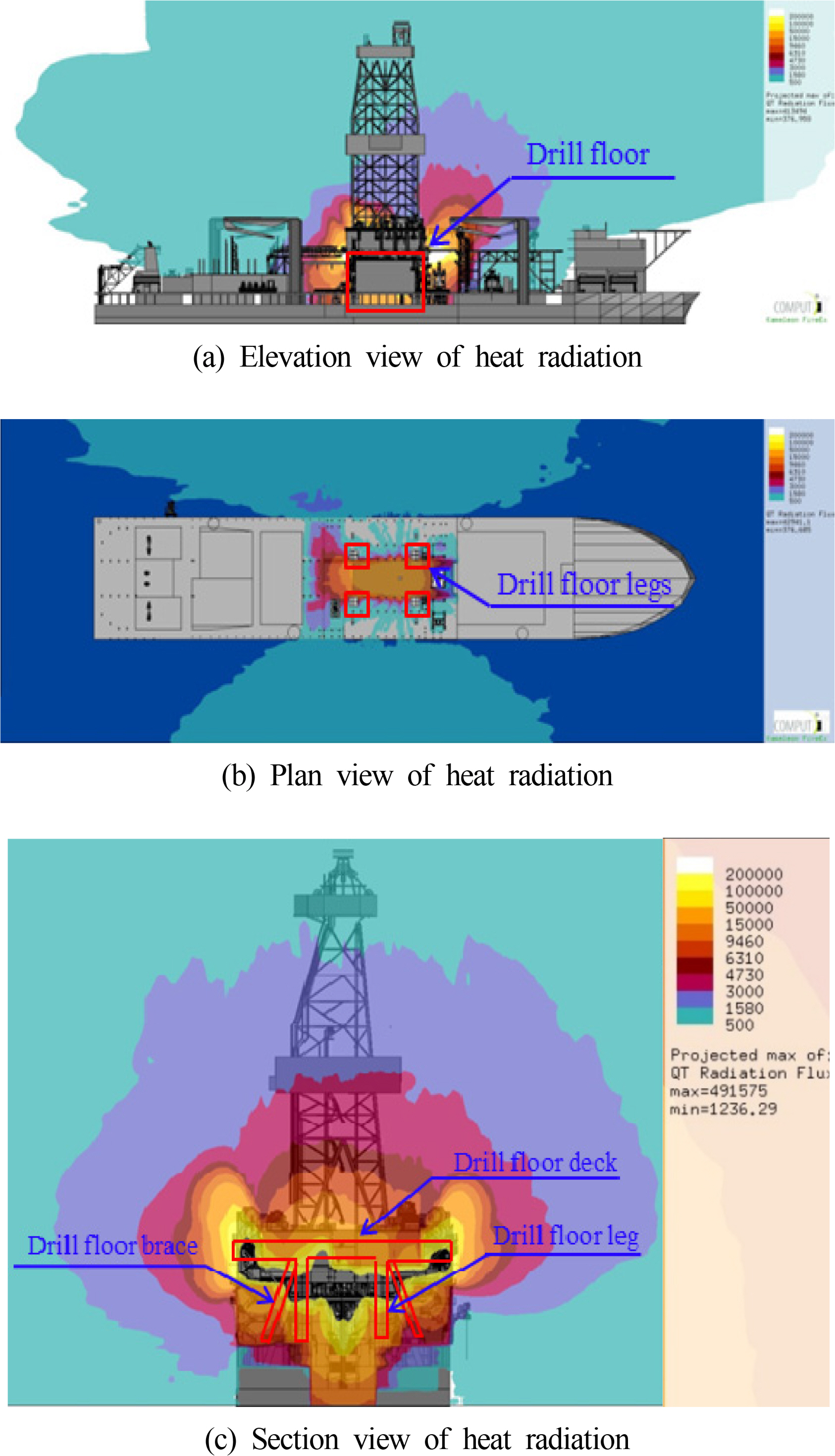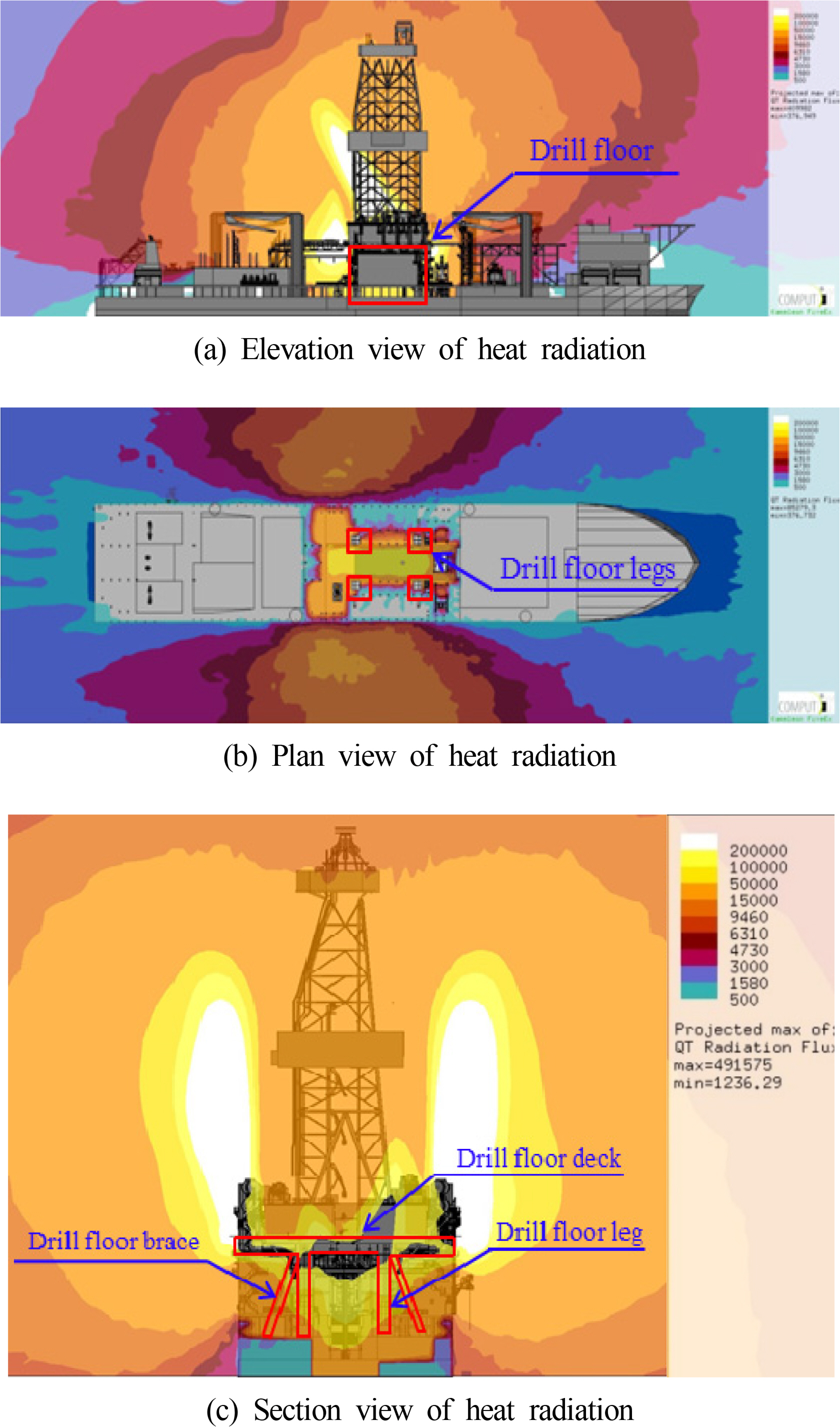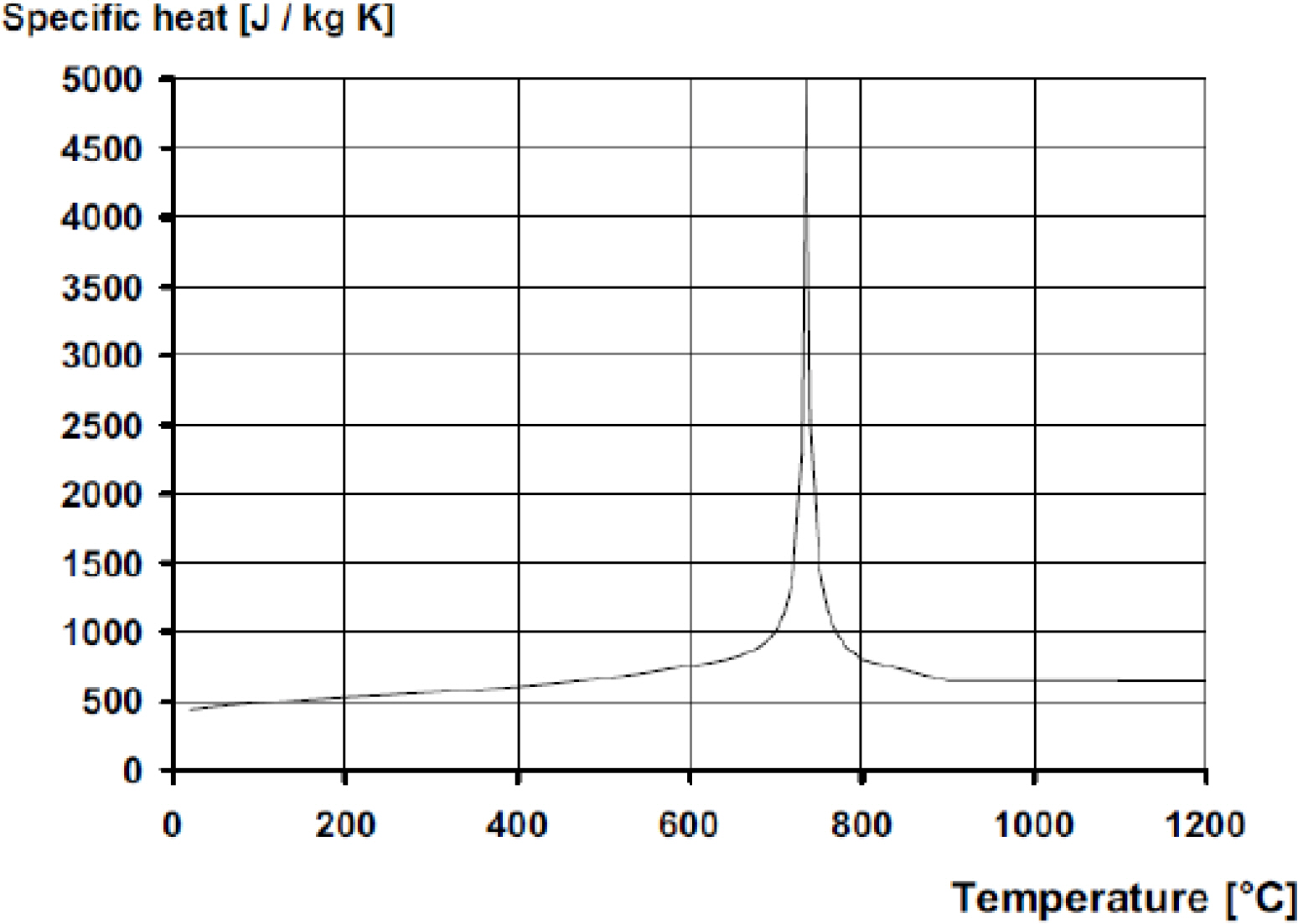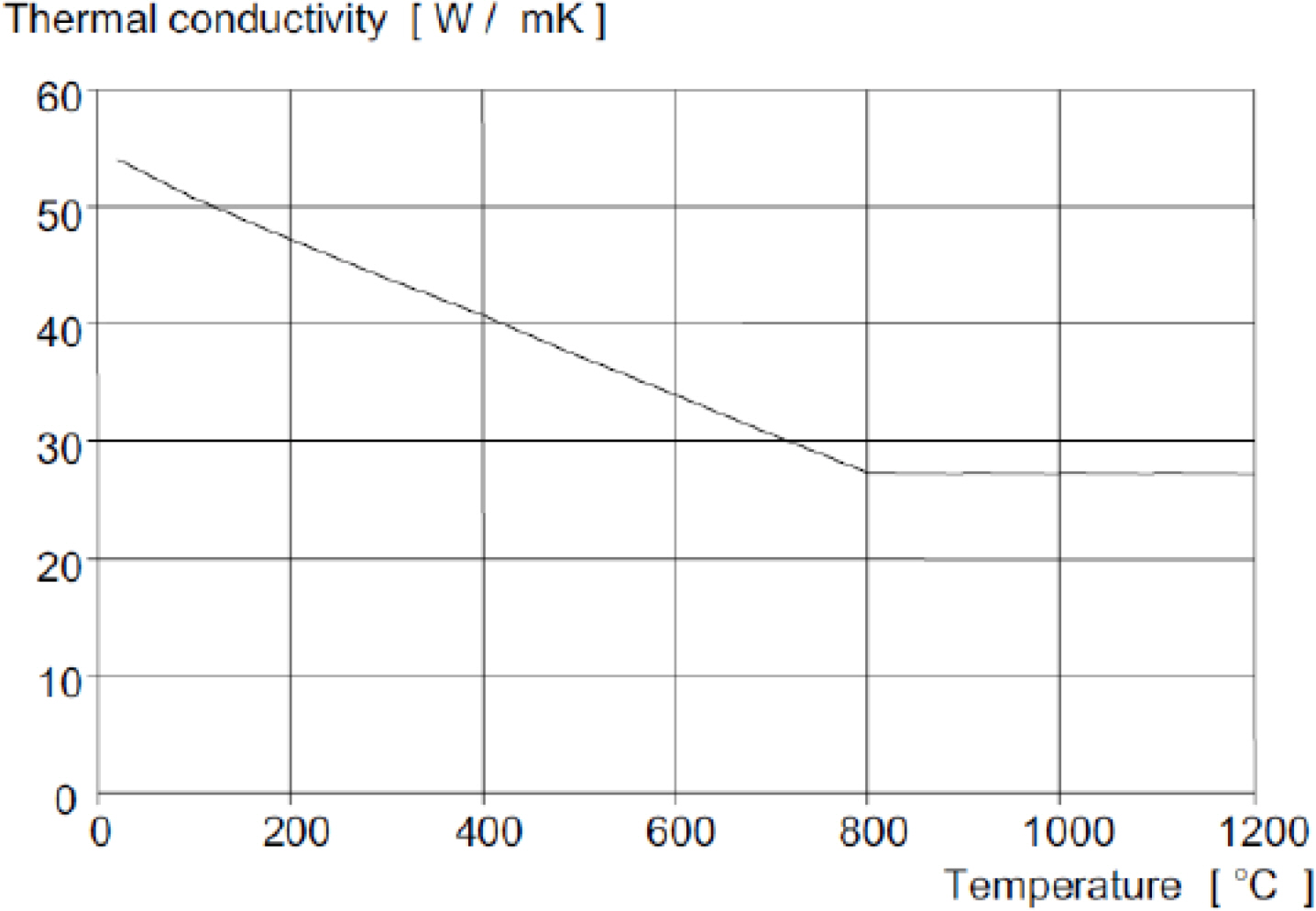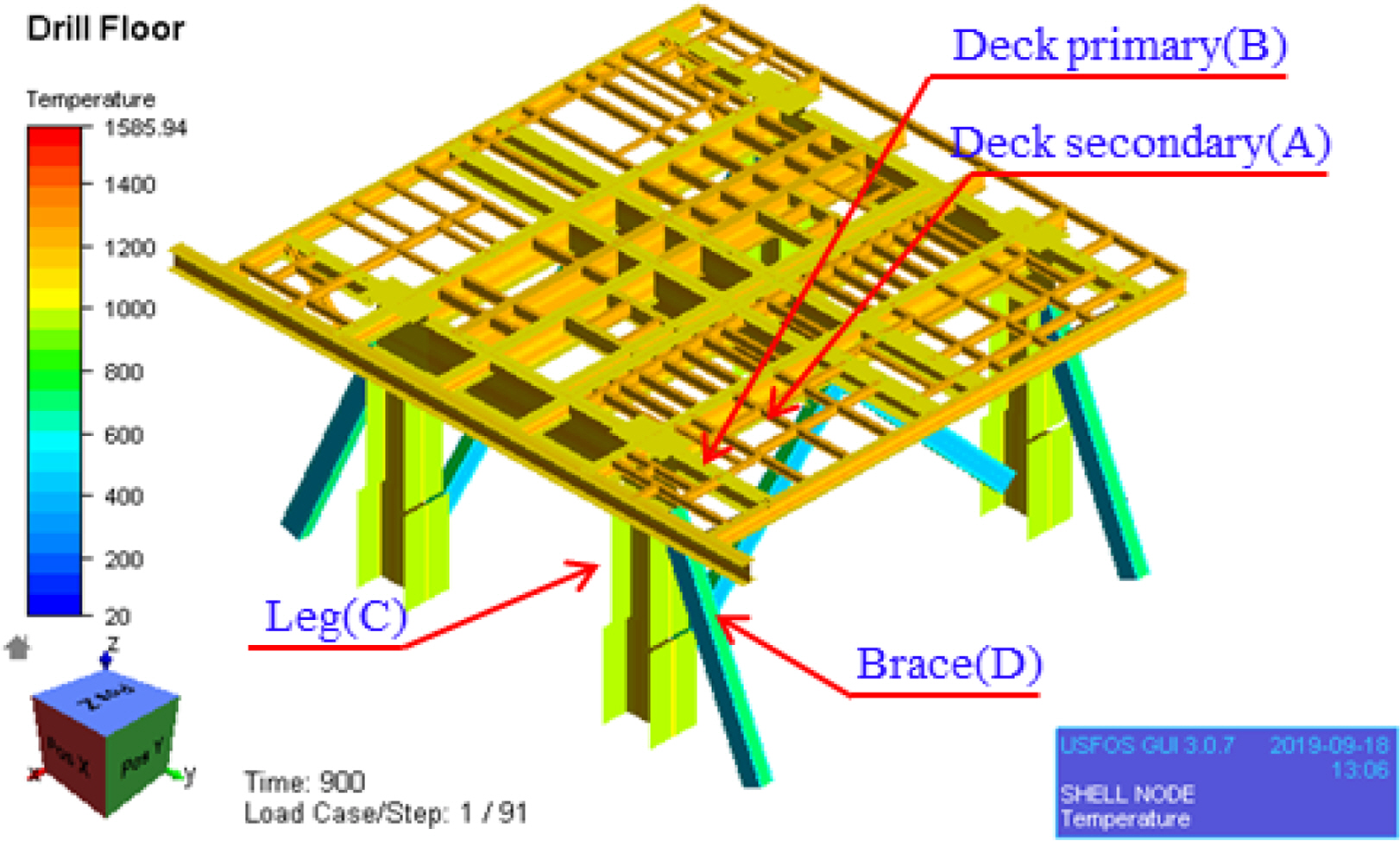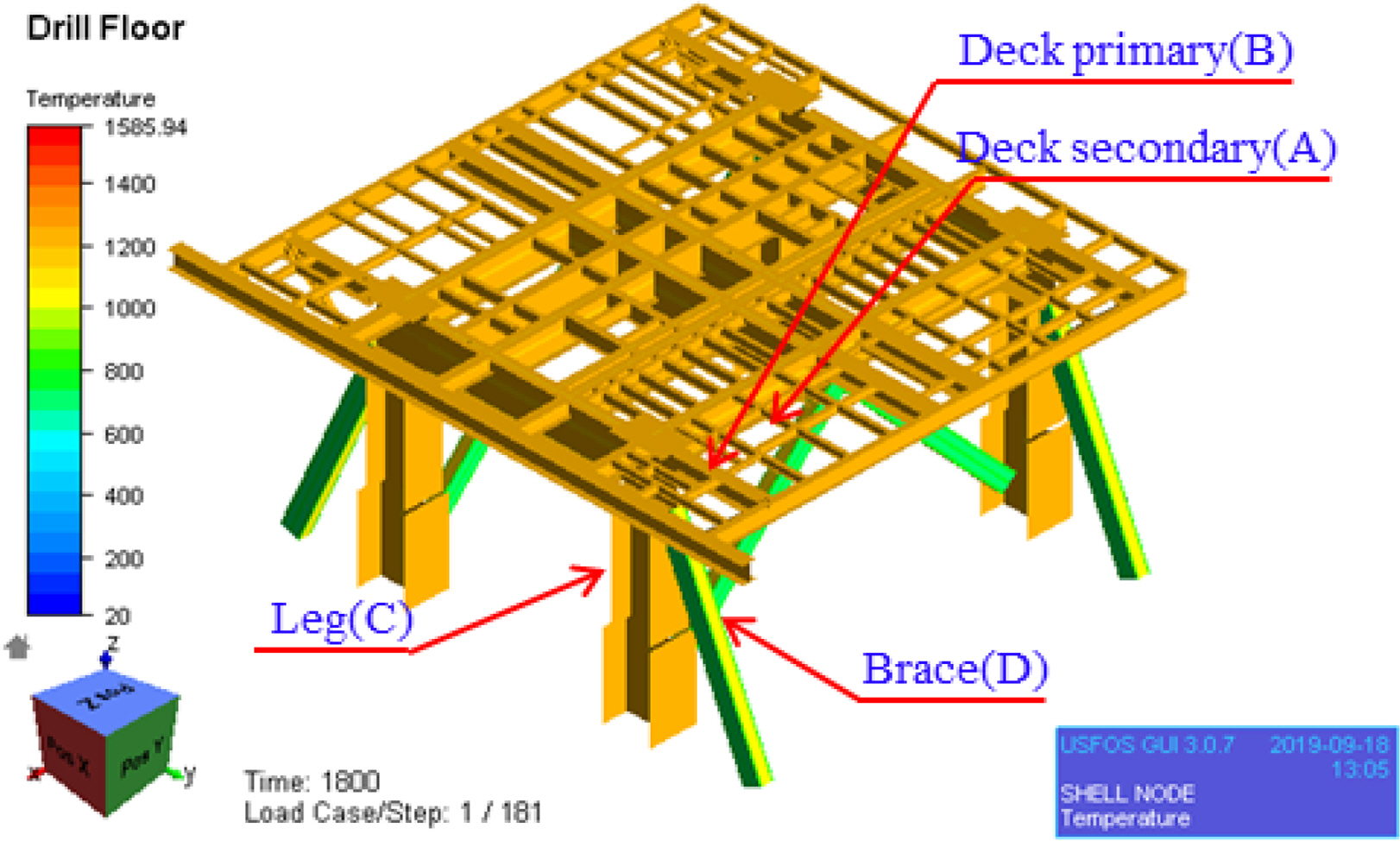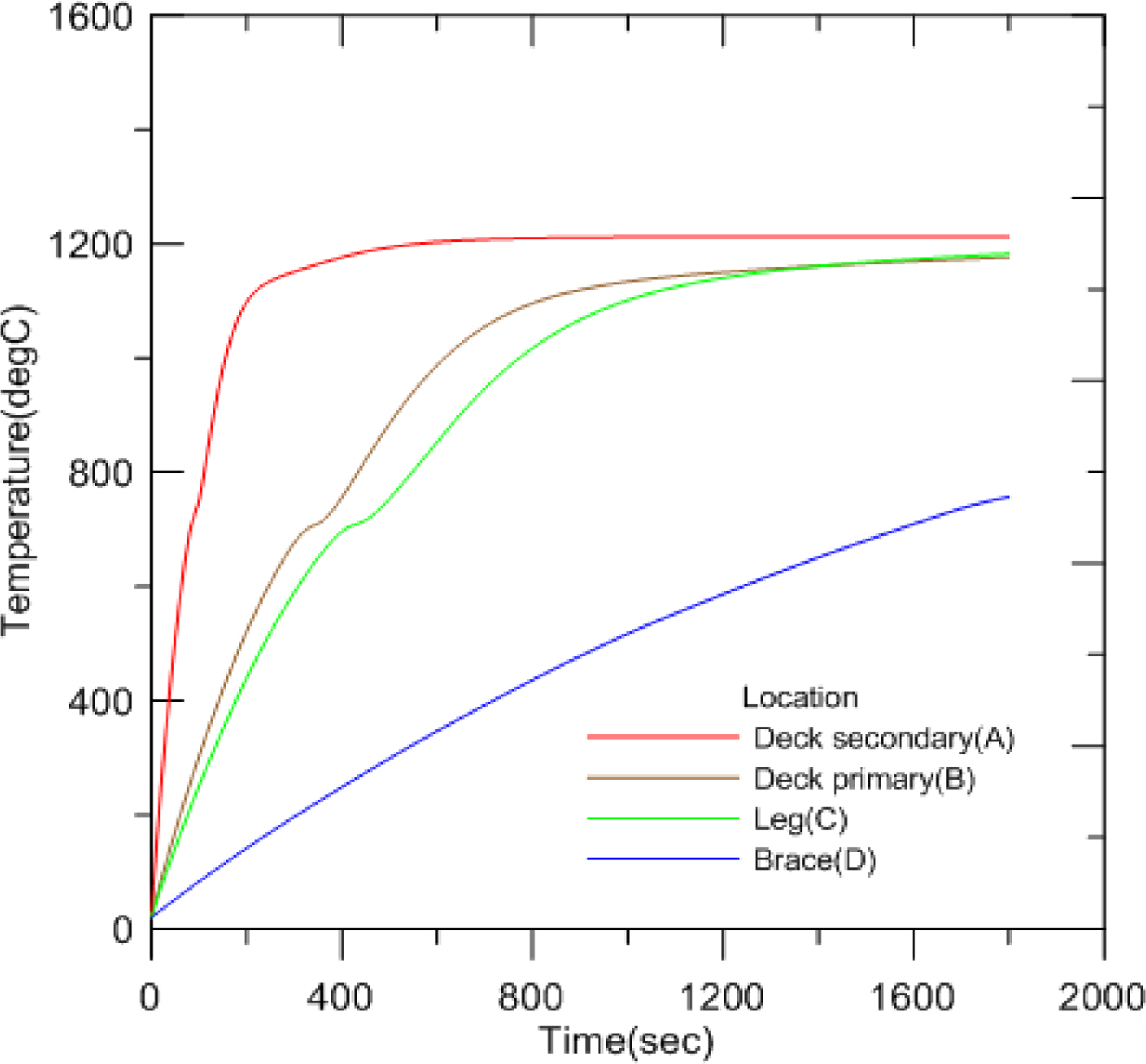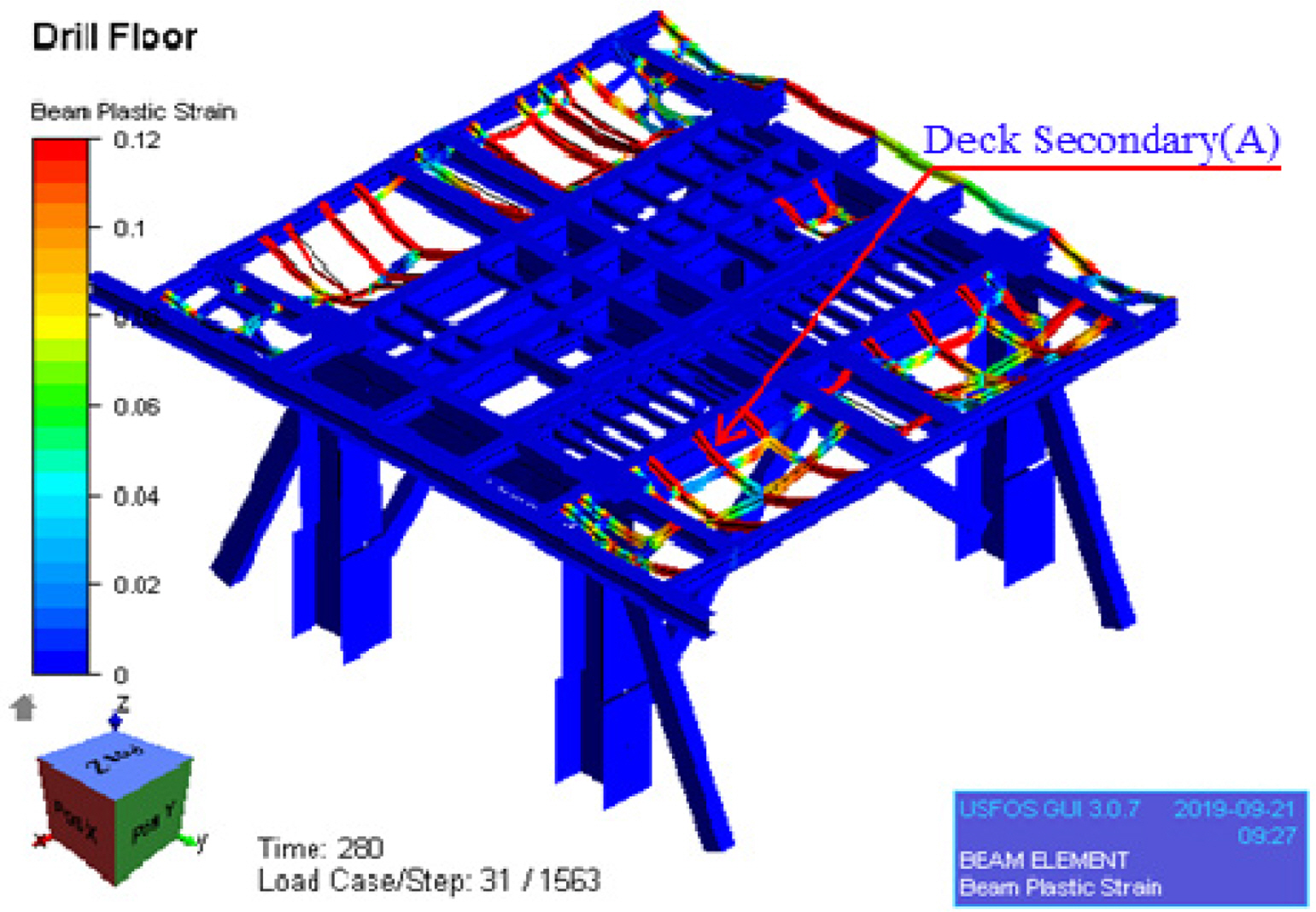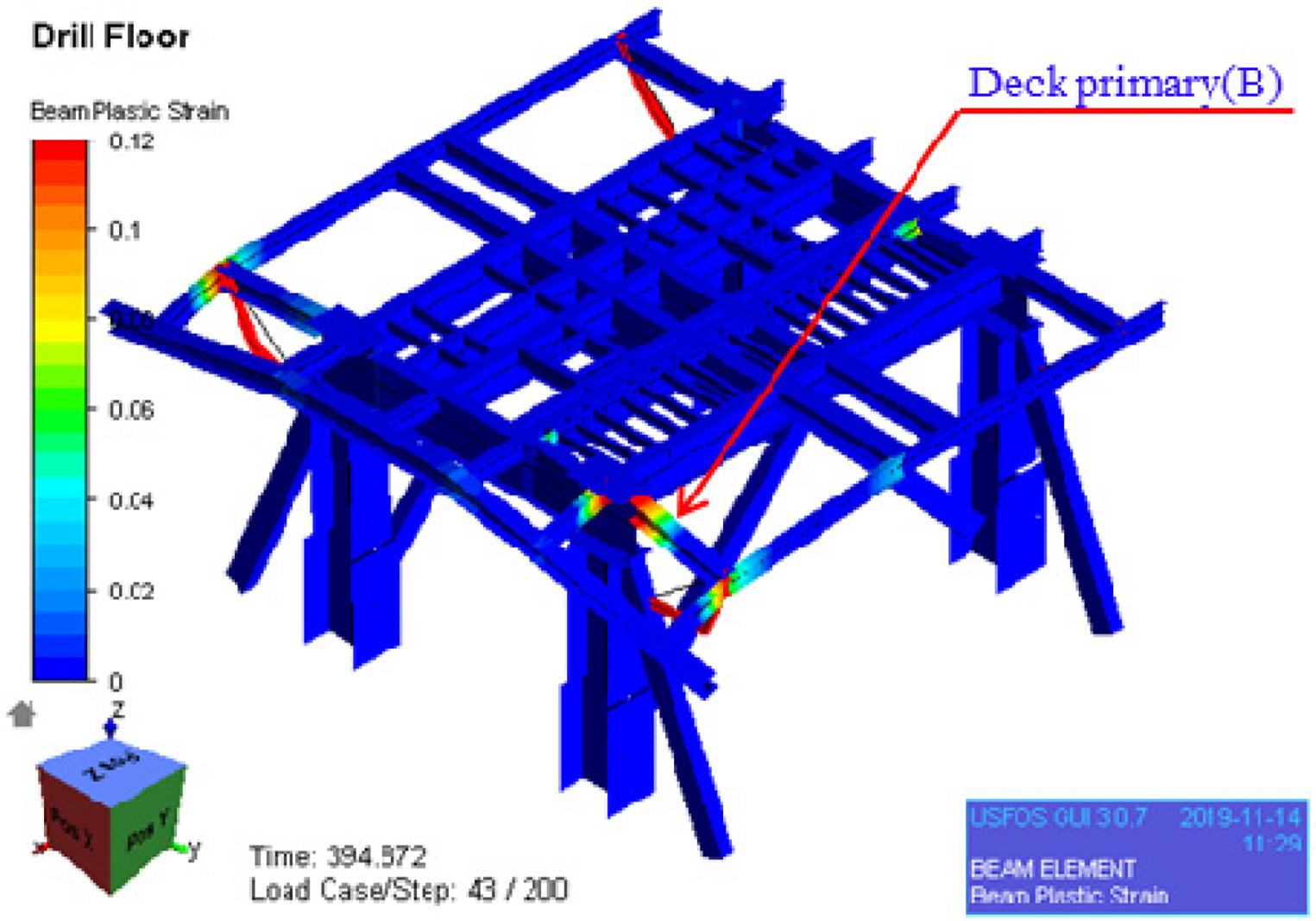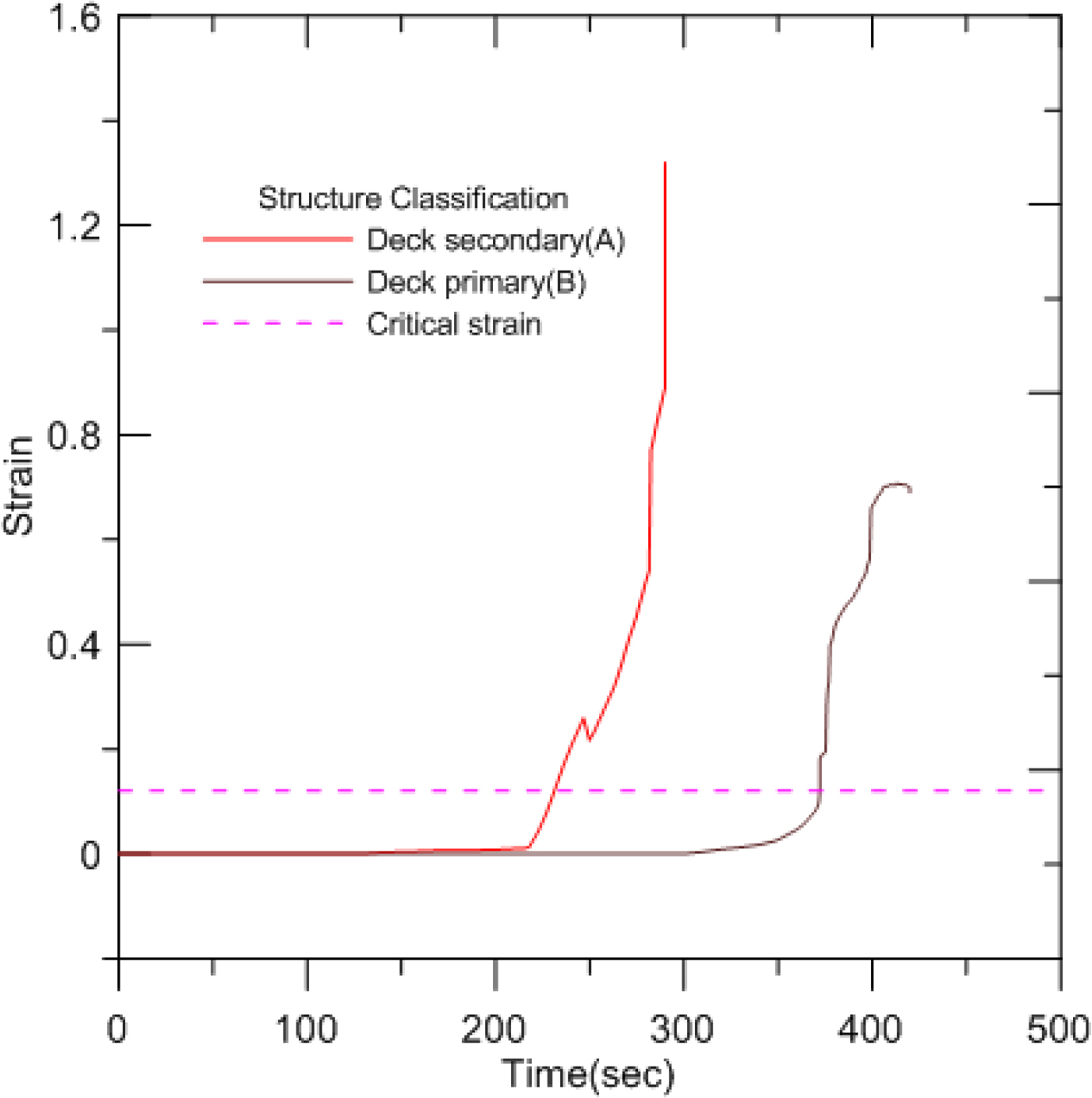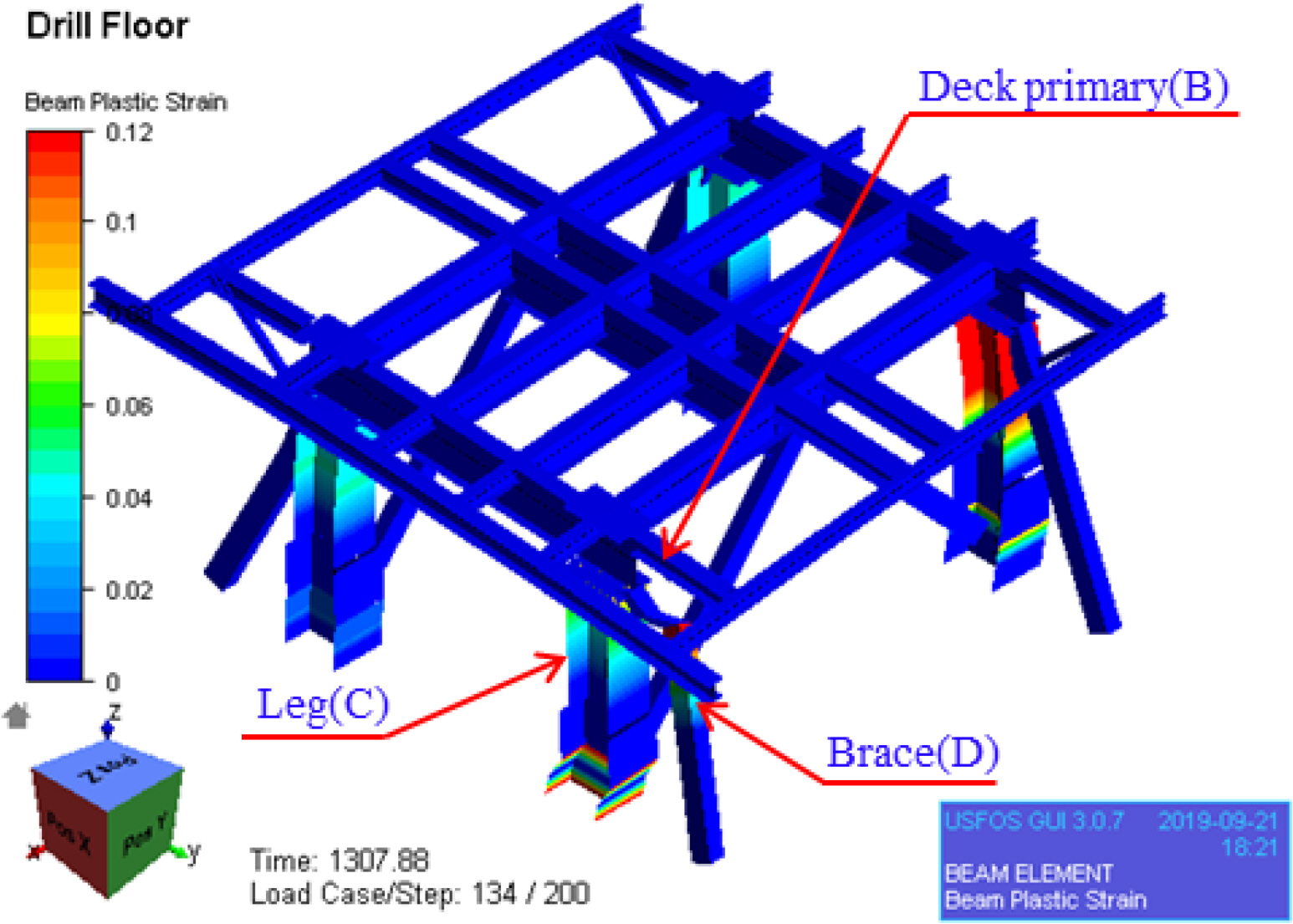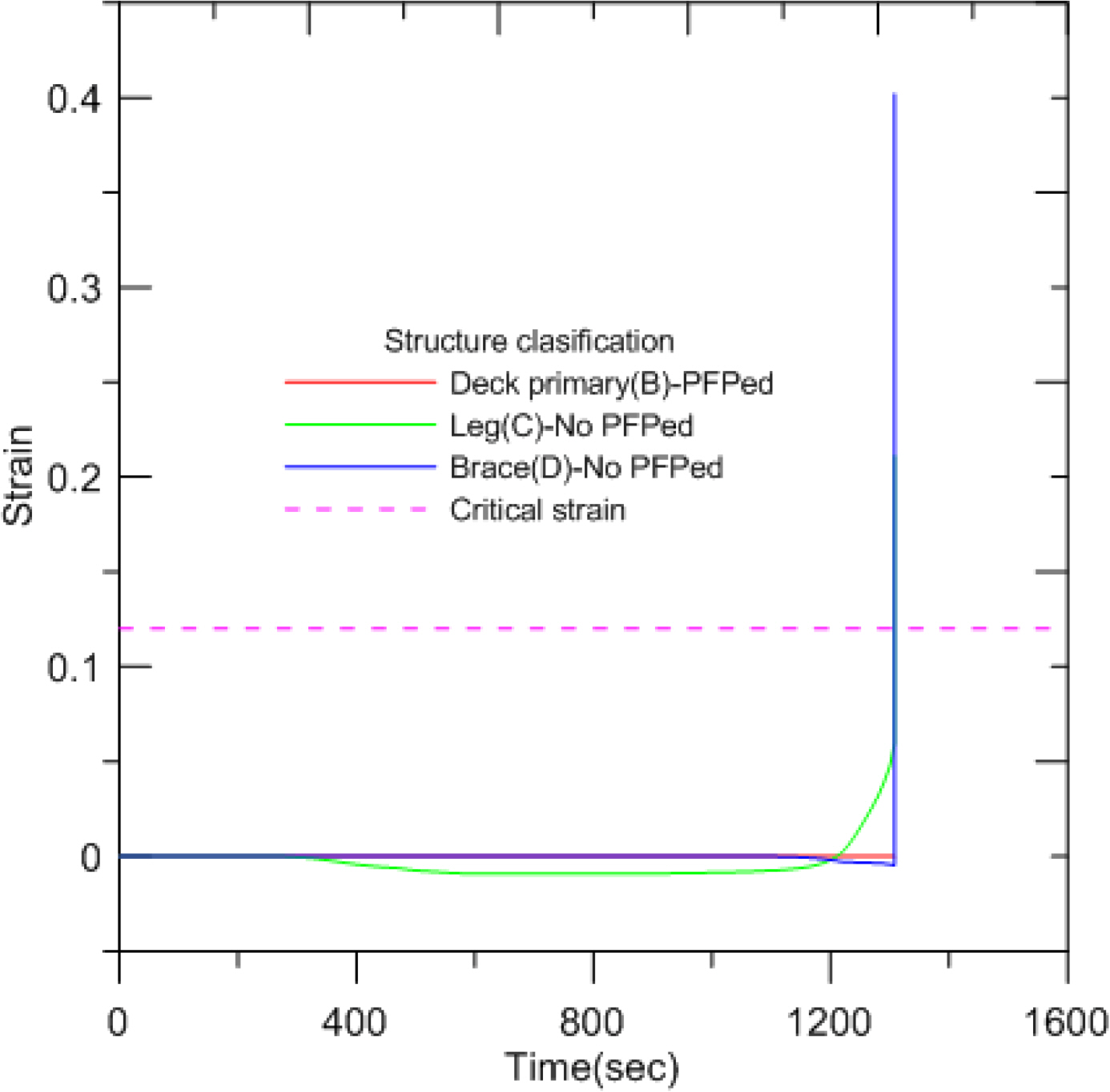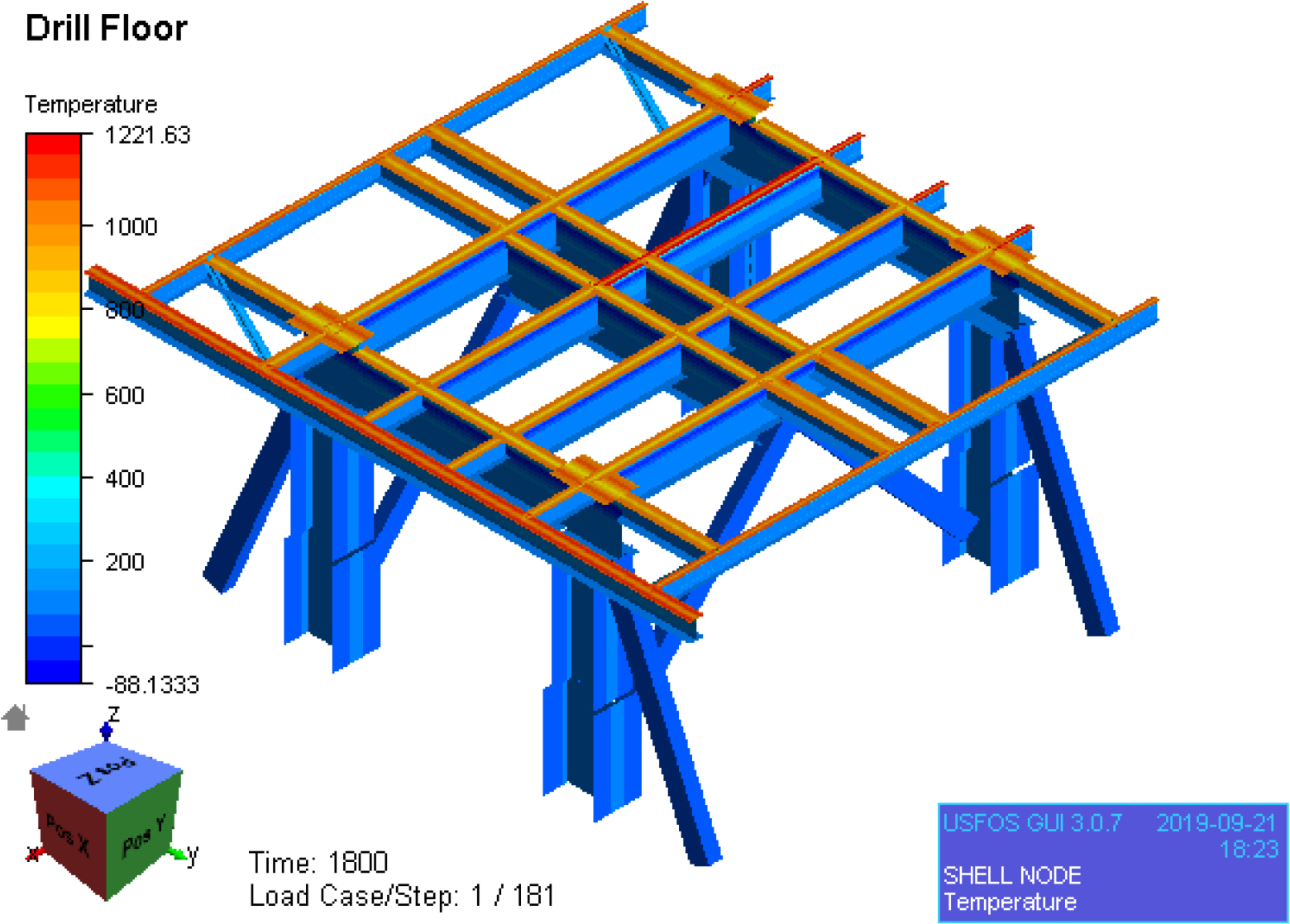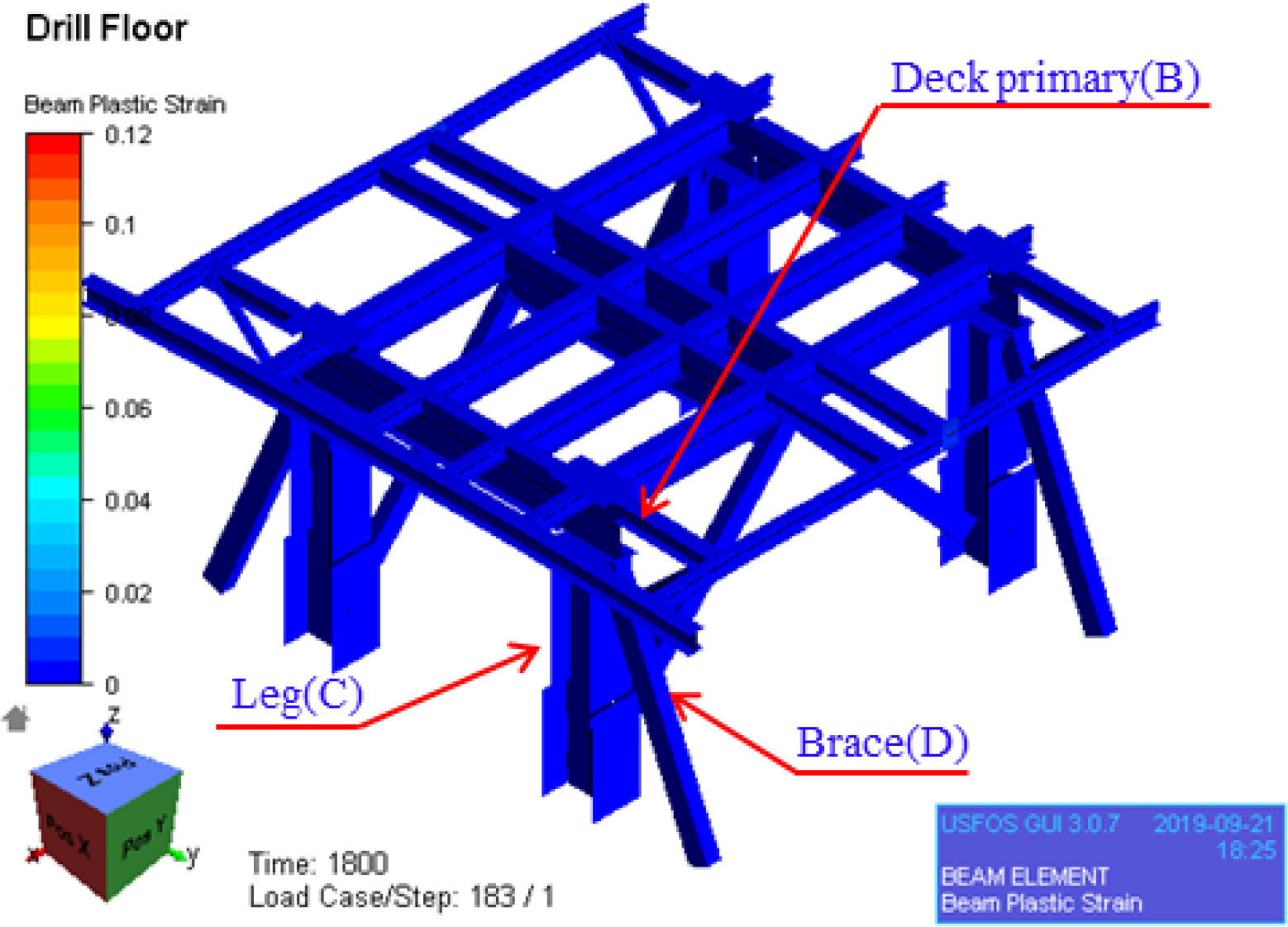1. Introduction
2. Fire Analysis
2.1 Analysis procedure
2.2 Main assumptions
2.3 Fire scenarios
2.4 Analysis results
3. Heat Transfer Analysis
3.1 Analysis procedure
3.3 Analysis results
4. Nonlinear structural response analysis
4.1 Analysis procedure
4.4 Structural analysis results
5. Application of passive fire protection
5.1 Analysis procedure
5.2 Result of structural analysis
5.2.1 Application of PFP on Deck
6. Conclusion
The behavior of the drill floor structure in a fire following blowout during drillship operations was estimated by calculating the heat flux through fire analysis. Heat transfer analysis, and structural analysis as a function of temperature, were performed.
Fire analysis was performed based on blowout scenarios of two types of leakage—restricted leakage (35 kg/s) and full leakage (150 kg/s). Based on the larger heat flux of the results, heat transfer analysis and structural analysis as a function of temperature were performed.
In general, fire protection is not provided on the drill floor of the drillship. However, in the event of fire, the area is vulnerable to collapse and is a risk factor for the structural stability of the drillship. Therefore, in this study, we propose the application of PFP so that the drill floor structure does not collapse for the 30-minute fire duration, which is required for safe evacuation of crew.
This study found that application of PFP on the primary deck, leg, and brace is the optimum method ensuring both structural stability and economic efficiency.





